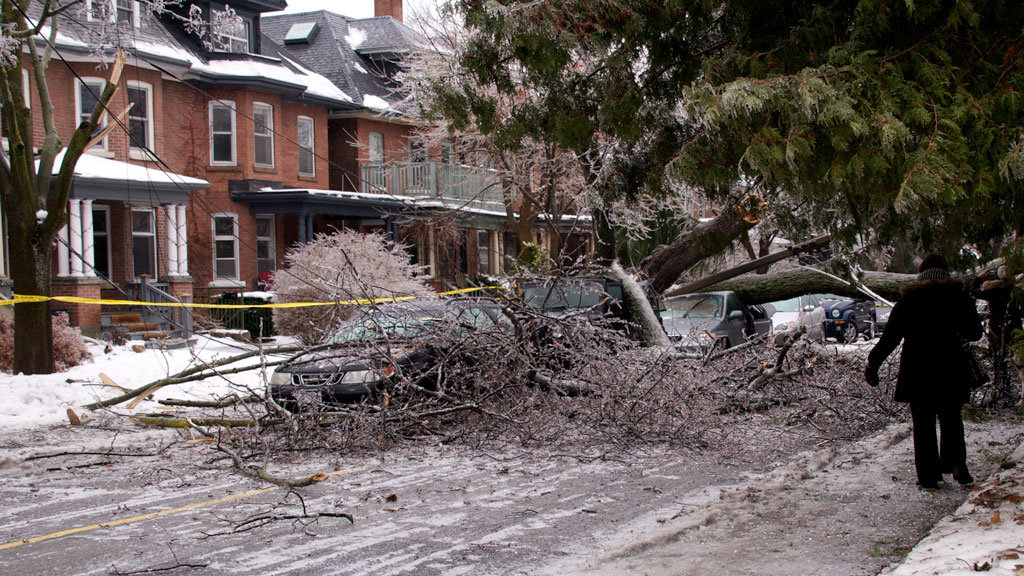A recent report from the Intact Centre on Climate Adaptation introduces a new tool for owners of key infrastructure assets and potential investors to evaluate those assets’ vulnerability to a wide range of climate risks.
Kathryn Bakos, director of climate finance and science at the Intact Centre, says Climate Risk Matrices (CRM) are a practical tool that can enable the prioritization of the measures asset builders and owners should take to reduce the risks of climate events.
Investors, meanwhile, can use CRMs to evaluate how asset owners stand against such threats as floods, wildfires, extreme heat, windstorms, snow and ice loading and thawing of permafrost.
Six CRMs are profiled in the report including electricity transmission and distribution; commercial real estate; hydroelectricity generation; finance; insurance; and wind electricity generation.
“Financial market participants want simple information,” said Bakos. “So on one page, we identify what those five to six key risks are on a per-industry sector basis, how those risks are going to manifest at site levels or across the supply chain, and then what measures will be put into place to reduce that risk and even what questions financial market participants need to be asking of those companies.”
The new Impact Centre report, titled Transitioning from Rhetoric to Action: Integrating Physical Climate Change and Extreme Weather Risk into Institutional Investing, is available on the Impact Centre website. The centre is affiliated with the University of Waterloo in Ontario.
The CRM charts use exclamation marks to recommend priorities for focus. Assessing hydro generation, for example, high temperatures create the risk of premature structural component failure or decreased performance due to thermal limits being exceeded, while heavy rains can trigger flooding, landslides or excessive silting, which can cause overtopping (water levels exceeding the top of the dam or levee) and downstream impacts.
Mitigation measures for the threat of a flood could include the redesign of dam spillways. And during times of increased rainfall, the CRM points out, dam operators may have to allow some water to bypass the turbines to limit downstream flooding, which reduces generation capacity.
“If you’re building infrastructure, and you’re getting loans for that infrastructure, or you’re getting insurance for that infrastructure, and that infrastructure fails, then there could be default on loans and insurance,” Bakos said.
“If you’re in the construction industry, and if you’re building lines for transmission and distribution, if you’re building a home or if you’re building commercial real estate, what measures do we need to be putting into place to reduce those risks?”
Disclosures must not only identify risks but also measures that need to be implemented to reduce those risks, and in so doing allow institutional investors to meet their duty as fiduciaries, Bakos pointed out.
The new tool fills a gap that remains despite financial warnings that have come from agencies such as the Task Force on Climate-Related Financial Disclosures and the International Sustainability Standards Board, said Bakos.
The problem is there haven’t been industry-specific metrics and targets against which a company can be benchmarked.
Bakos would like to see CRMs developed for a wide range of industries beyond the six identified.
The report argues “institutional investors should view climate change on par with political instability, violent conflicts, cybersecurity and volatile interest rates. However, there is one exception — these other factors will eventually reverse course; climate change will not.”
The report follows the increasing financial toll caused by catastrophic insurable losses over the past 40 years, with an inexorable uptick in insurable claims each year punctuated by milestone catastrophes such as the 2016 Fort McMurray wildfire, which caused around $6 billion in insurable losses, and the Alberta and Toronto floods of 2015, where claims approached $4 billion. In 2022, claims from extreme weather events were over $3 billion.
“Understand that for every dollar of insurable losses there is three to four dollars of uninsurable losses, meaning the business itself would incur that cost,” said Bakos.
The numbers are stark and the threats real but still project owners have not yet been galvanized into adequate action, Bakos said, in part because of the focus on decarbonization.
“That is incredibly important, we have to mitigate greenhouse gas emissions to avoid the worst impacts of climate change in the future,” she said.
“But to be very honest, I think most industry sectors, most businesses are actually just getting on the resilience file.”
Follow the author on Twitter @DonWall_DCN.



Recent Comments